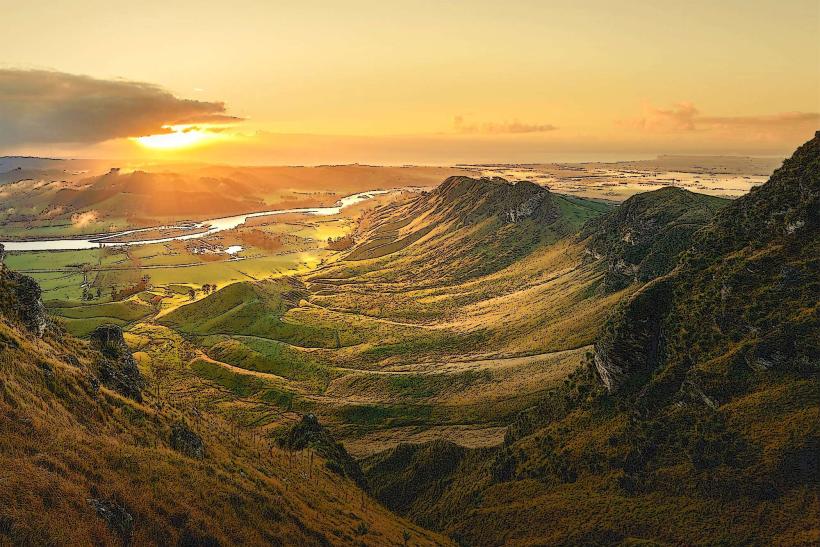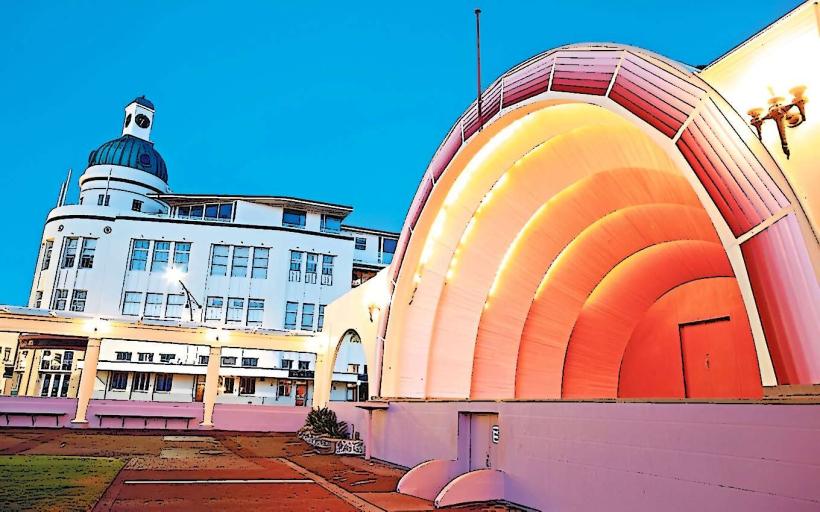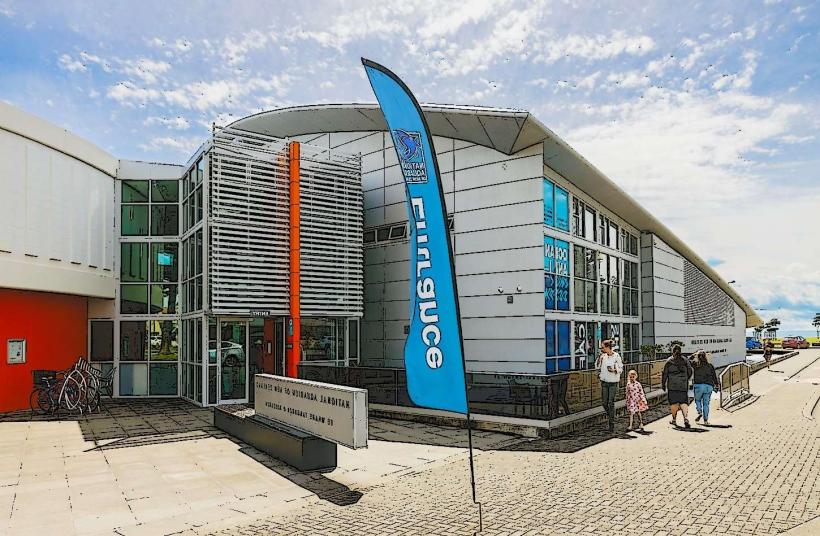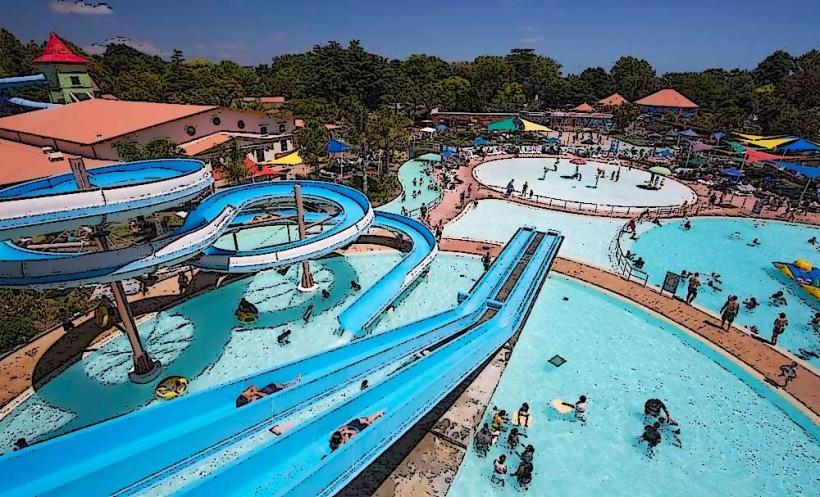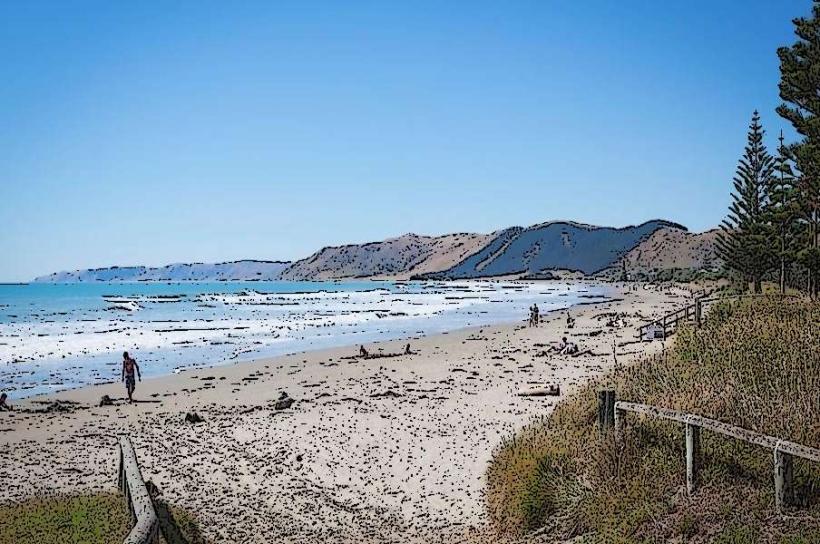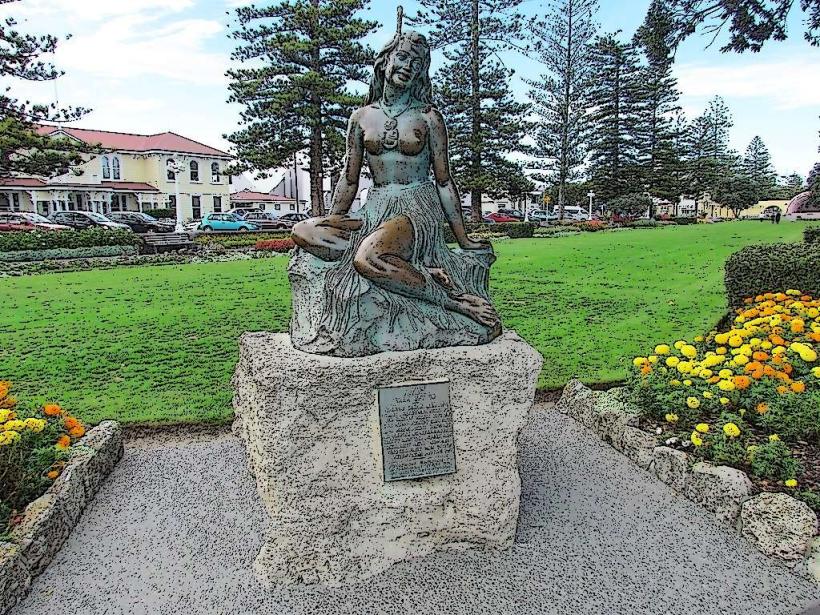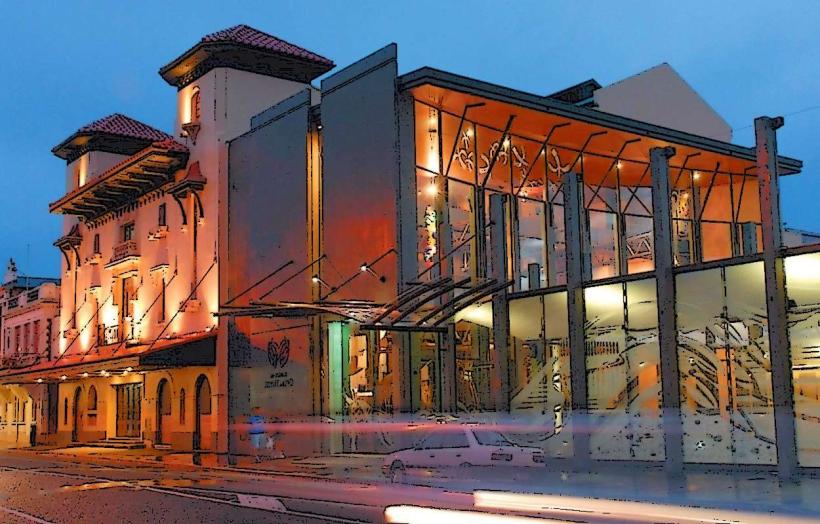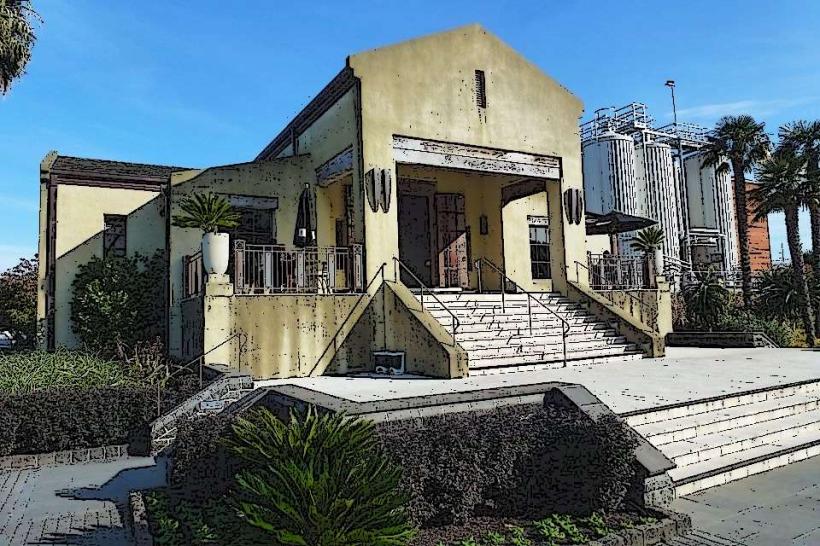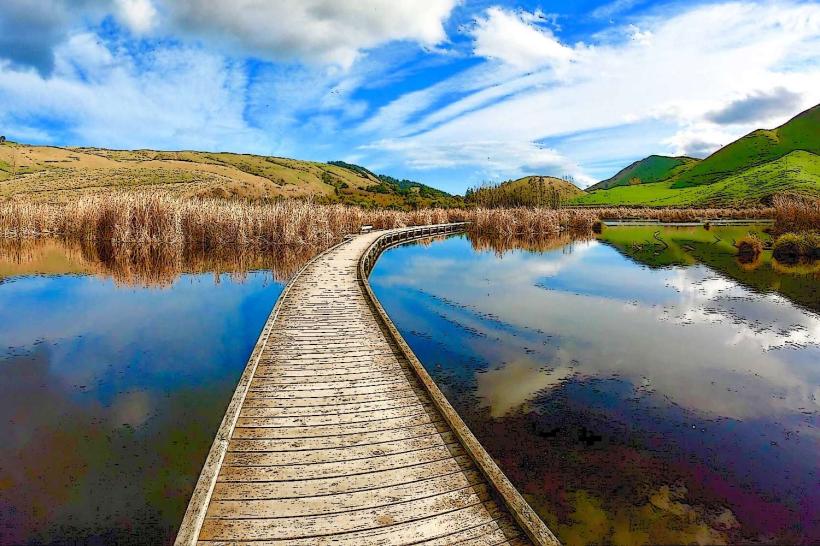Information
Landmark: Cape KidnappersCity: Napier Hastings
Country: New Zealand
Continent: Australia
Cape Kidnappers is a striking and significant geographical feature located on the North Island of New Zealand, near the city of Napier in the Hawke's Bay region. It is famous for its dramatic cliffs, rugged coastal scenery, and as the home to one of the world’s largest and most accessible gannet colonies. The cape is also rich in cultural history, offering both natural and historical significance for visitors.
Geography and Natural Features
Cape Kidnappers is a prominent headland that extends into the Pacific Ocean. It is characterized by steep, towering cliffs that rise up to 100 meters (328 feet) above the sea, offering stunning views of the ocean and surrounding coastline. The cape forms part of the Gisborne region’s coastline and is visible from miles around, making it a landmark for travelers along the eastern coast of the North Island.
The land is primarily made up of limestone and shale rock formations, contributing to the dramatic cliff faces that are especially stunning at sunrise or sunset. The coastline is also marked by large, sweeping beaches and rocky outcrops, and the waters off the cape can be quite rough, making it a unique and wild coastal area.
Cultural Significance
The name Cape Kidnappers has historical significance tied to early European exploration. The cape was named in 1769 by Captain James Cook, who, during his first voyage to New Zealand, encountered the local Māori people here. The name "Kidnappers" stems from an incident where the Māori people allegedly attempted to abduct a young member of Cook’s crew. However, the Māori name for the cape is Te Kauwae-a-Māui, which translates to “The Jawbone of Māui.” According to Māori mythology, Māui, a legendary figure, fished up the North Island from the sea, and the cape is thought to represent part of his jawbone.
The area has strong connections to local Māori iwi (tribes), particularly the Ngāti Kahungunu and Ngāti Rārua peoples, who have historical ties to the land and consider it an important part of their heritage.
The Gannet Colony
One of the main attractions at Cape Kidnappers is its large gannet colony, which is one of the largest in the world. The Australian gannet (also known as Tāiko in Māori) makes its home here, and each year between October and March, thousands of these seabirds gather to breed.
Gannet Viewing: The colony is located on the cliffs of Cape Kidnappers, and visitors can see these striking birds up close as they nest, dive for fish, and raise their chicks. The birds have striking white plumage with black wing tips and are known for their dramatic plunge-diving fishing technique.
Guided Tours: There are guided tours available to take visitors safely up to the colony, either on foot or by tractor tours, which travel over the farmland surrounding the cape. These tours are led by local guides who provide valuable insights into the ecology, history, and cultural importance of the area.
Bird Watching: In addition to gannets, visitors may also see other seabirds, such as kāhu (harrier hawks), seagulls, and shags, as well as native land birds. The region offers some of the best birdwatching opportunities in New Zealand, especially during the breeding season.
Outdoor Activities and Experiences
Cape Kidnappers is not just a place for nature lovers and bird watchers. It offers a variety of outdoor activities for visitors to enjoy:
Walking Tracks: There are walking tracks along the cliffs that provide incredible views of the coast, the gannet colony, and the surrounding farmland. The tracks are best accessed during the summer months when the weather is milder, but they can be more challenging during winter when conditions are rough.
Guided 4WD Tours: For those who prefer not to walk, guided 4WD tractor tours are available, which take visitors directly to the gannet colony while providing commentary about the area’s natural and cultural significance.
Golfing at Cape Kidnappers Golf Course: The Cape Kidnappers Golf Course is an internationally acclaimed links-style course located near the cape. The course offers challenging holes with spectacular ocean views, making it a popular destination for golfers.
Fishing: The waters around Cape Kidnappers are excellent for deep-sea fishing, and visitors can book fishing charters to experience the region’s rich marine life firsthand. Species such as snapper, kingfish, and grouper can be caught in these waters.
Photography: The dramatic cliffs, wildlife, and stunning coastal views make Cape Kidnappers an ideal location for photographers. Whether you're interested in capturing the gannet colony, the coastline at sunrise, or the wildlife, the cape provides many opportunities for stunning shots.
Flora and Fauna
In addition to the gannet colony, Cape Kidnappers is home to a variety of native plants and animals:
Flora: The vegetation around the cape consists mainly of coastal grasses, shrubs, and a few small pockets of native forest. The surrounding farmland is interspersed with patches of manuka, kowhai, and flax, which are important to local Māori communities for their traditional uses.
Fauna: The most well-known fauna at Cape Kidnappers are the gannets, but there are also other seabirds, native New Zealand falcons (kārearea), and native reptiles like the tuatara. Visitors may also spot marine life, including dolphins and occasionally whales offshore.
Access and Transportation
Cape Kidnappers is located approximately 20 kilometers southeast of Napier, making it easily accessible by car. There is a well-maintained road leading to the base of the cape, and visitors can access the area from Clifton or Haumoana. However, access to the gannet colony is via guided tours, which are required for safety reasons.
By Car: Visitors can drive to Clifton and take a short detour to access the nearby coastline and hiking areas.
By Bus or Tours: For those staying in Napier or Hastings, there are various tours that can take visitors to Cape Kidnappers, including gannet-viewing and guided walking tours.
Best Time to Visit
The best time to visit Cape Kidnappers is during the spring and summer months (October to March), as this is when the gannet colony is most active and visible. The weather is also warmer and more conducive to outdoor activities like walking and sightseeing. However, the cape is a year-round destination, with different activities available depending on the season.
Conclusion
Cape Kidnappers is a remarkable and picturesque location that offers a combination of natural beauty, wildlife, and cultural significance. Whether you’re there to witness the dramatic gannet colony, enjoy outdoor activities such as hiking and golf, or simply take in the breathtaking views, Cape Kidnappers is a must-visit destination in Hawke's Bay.

